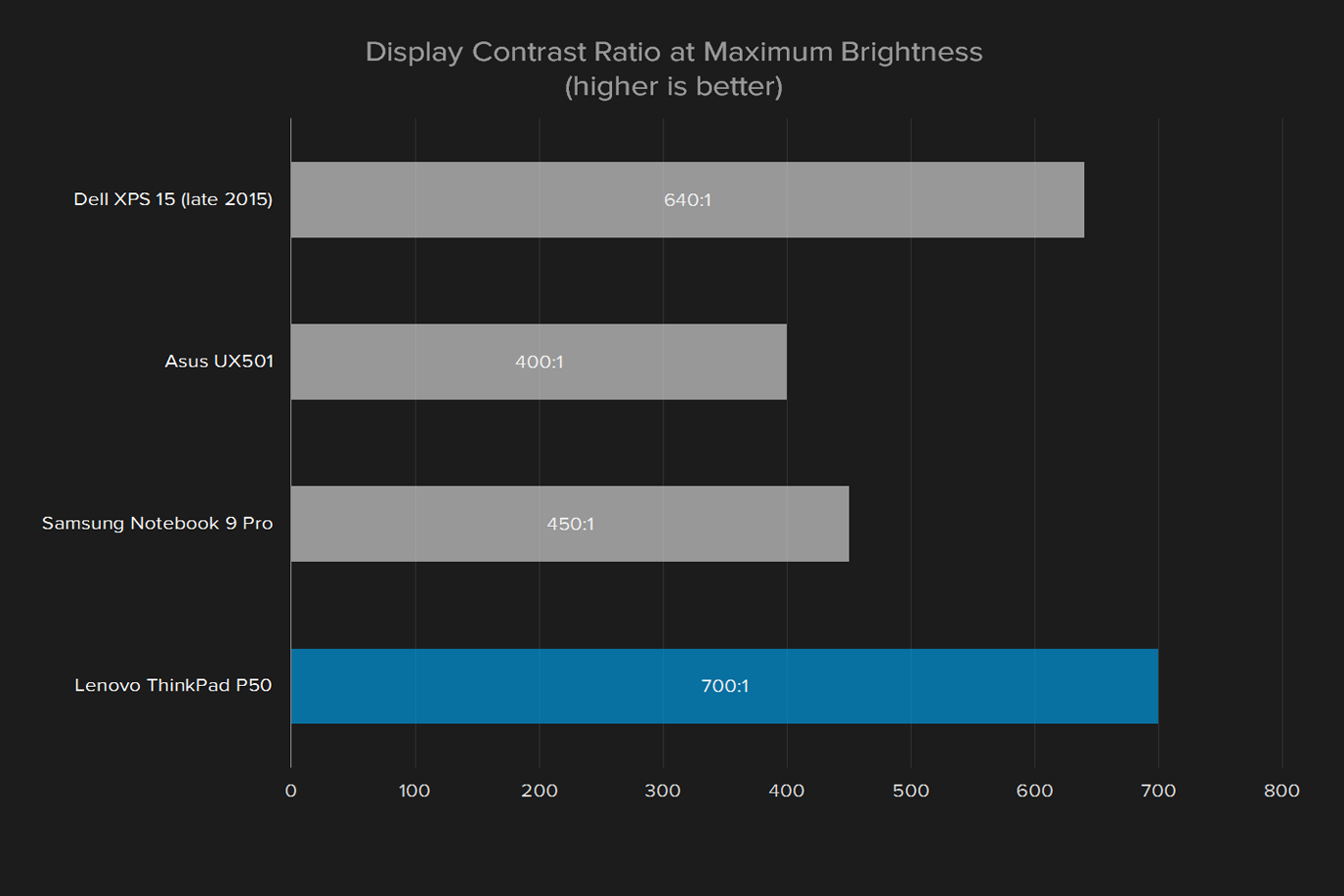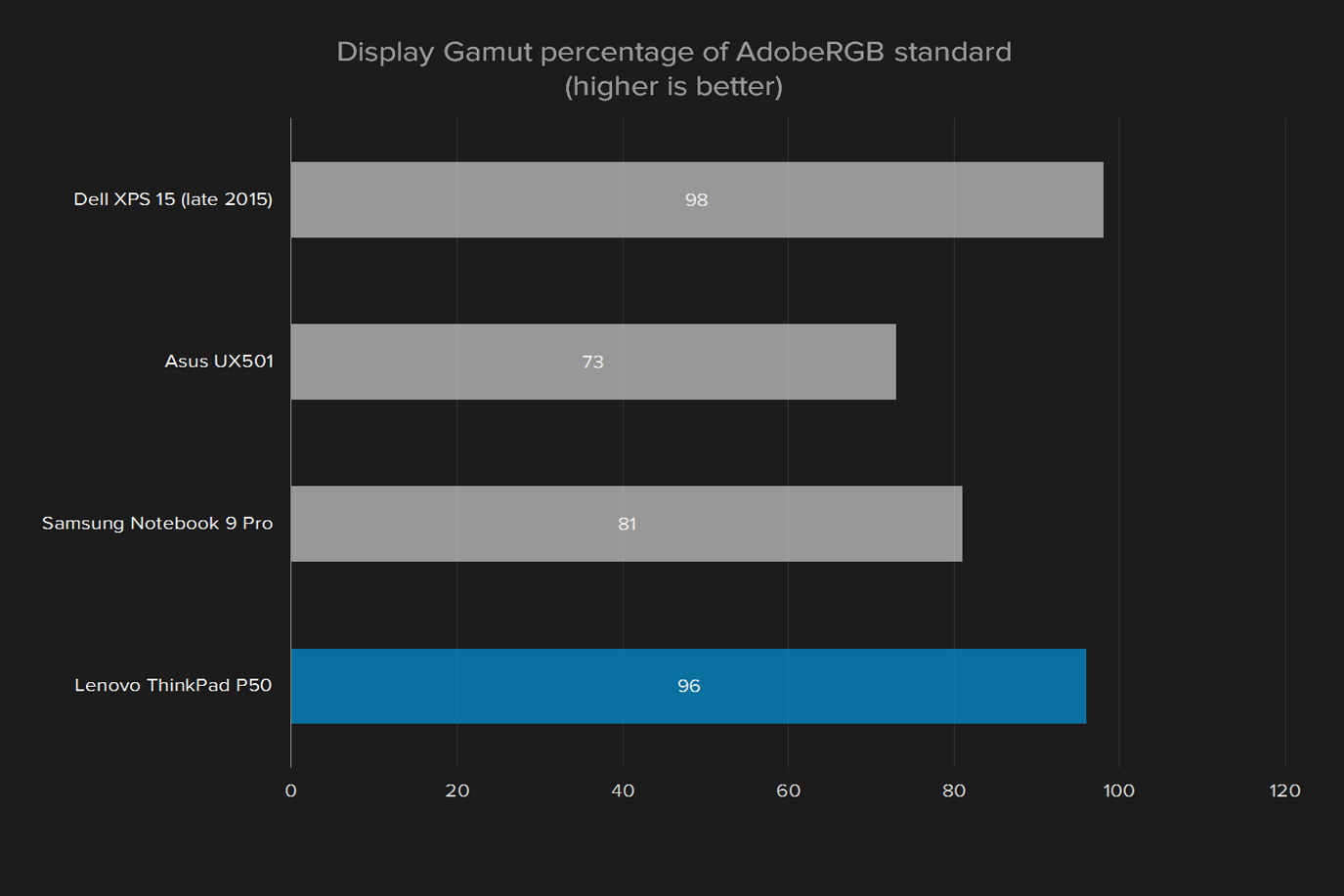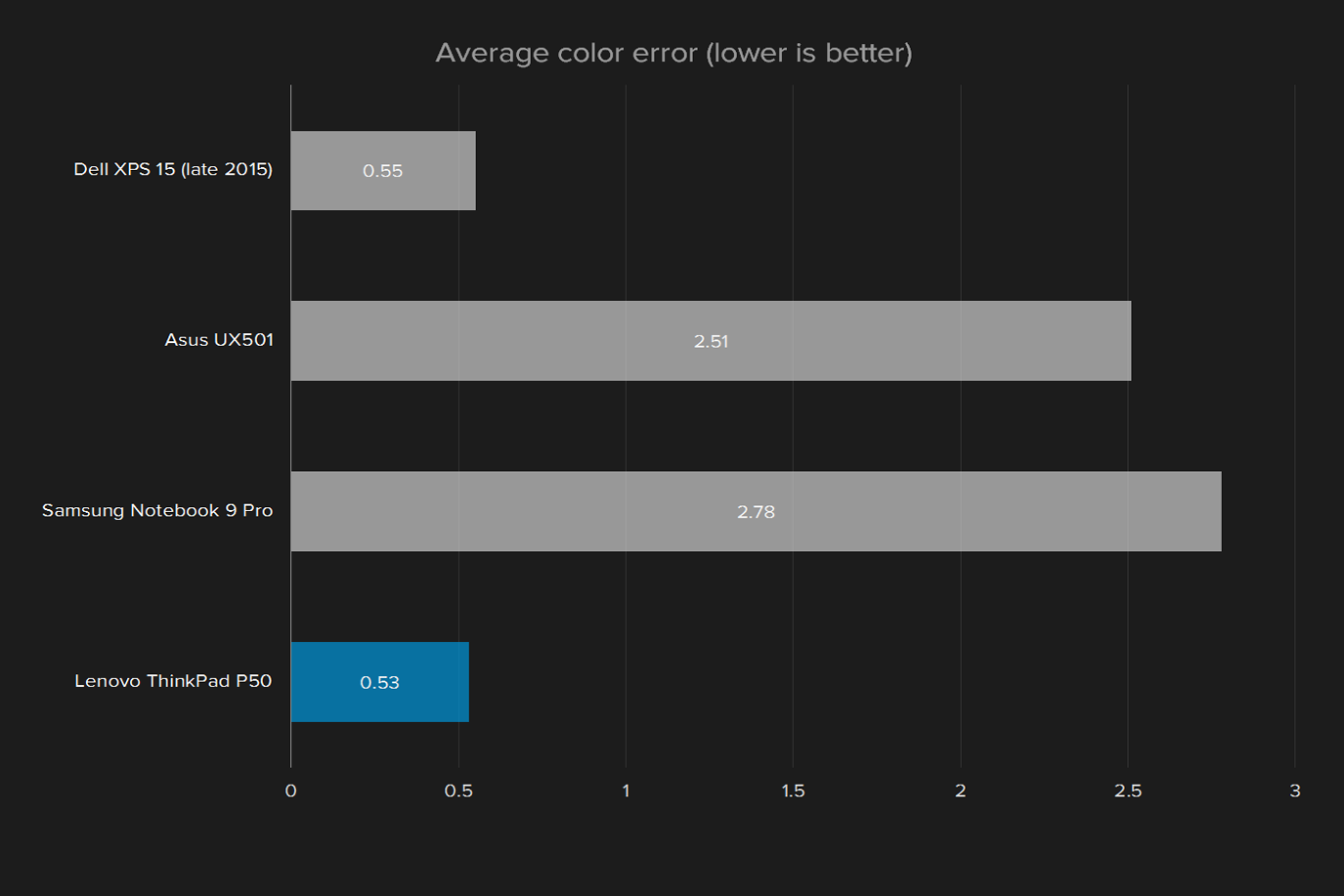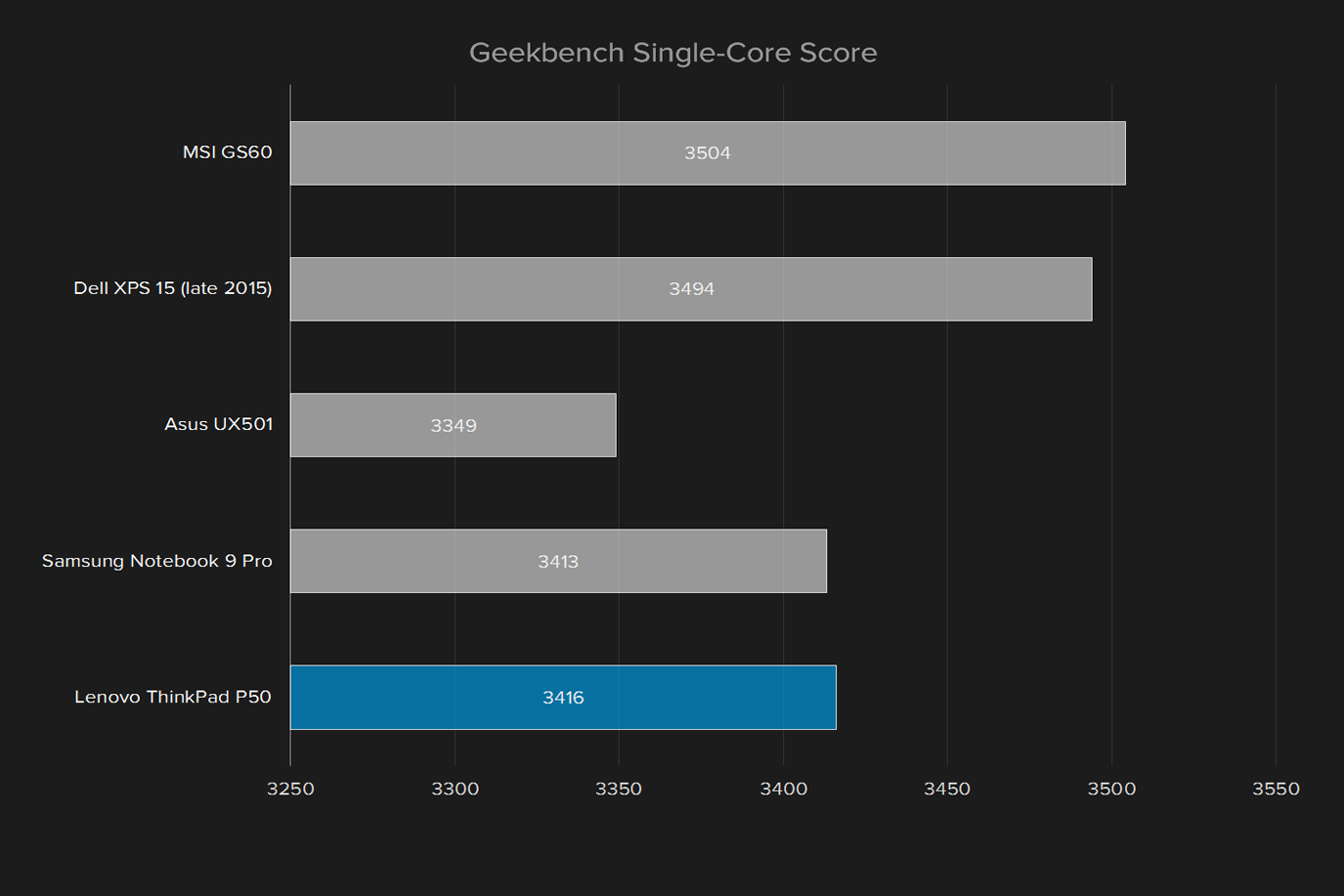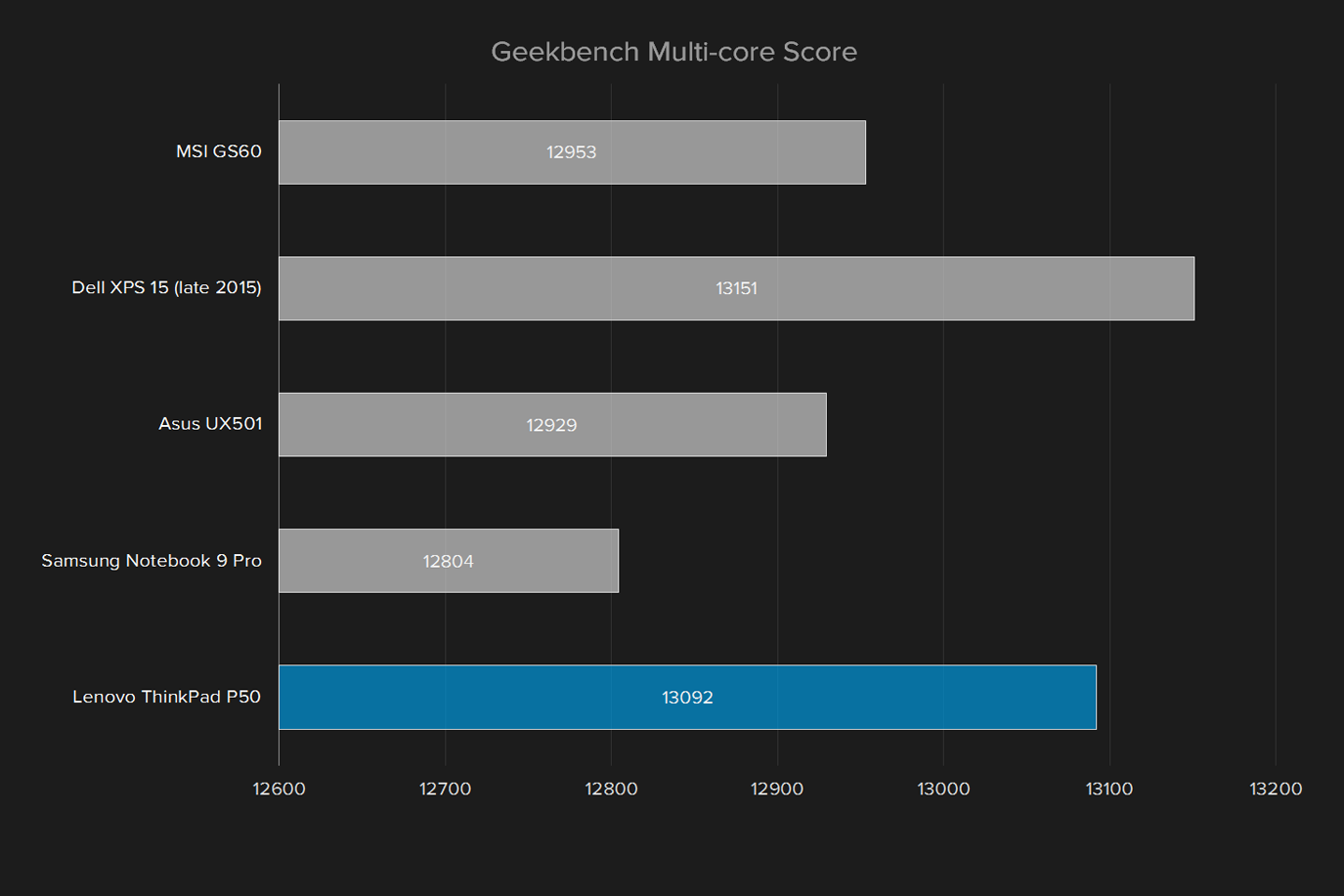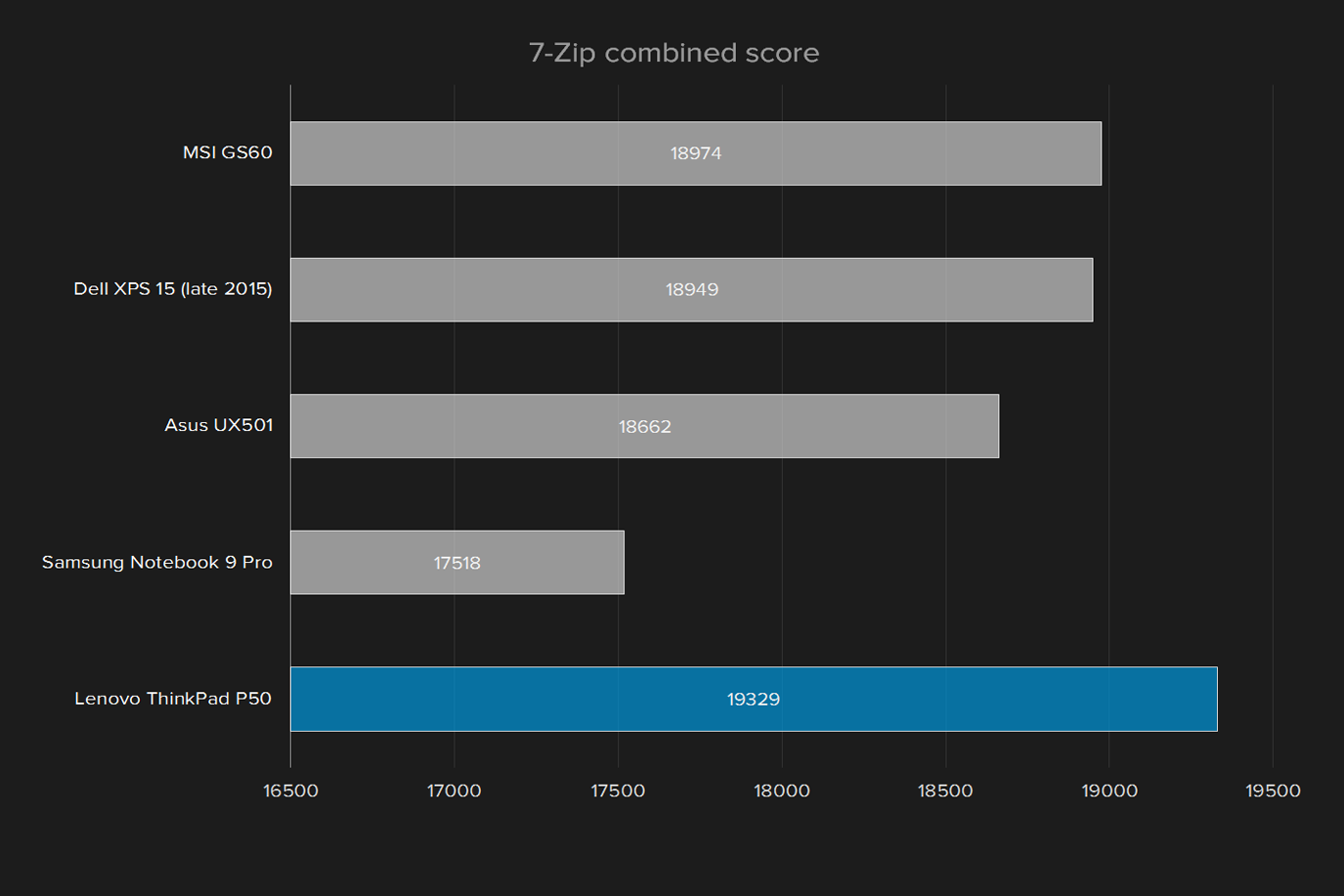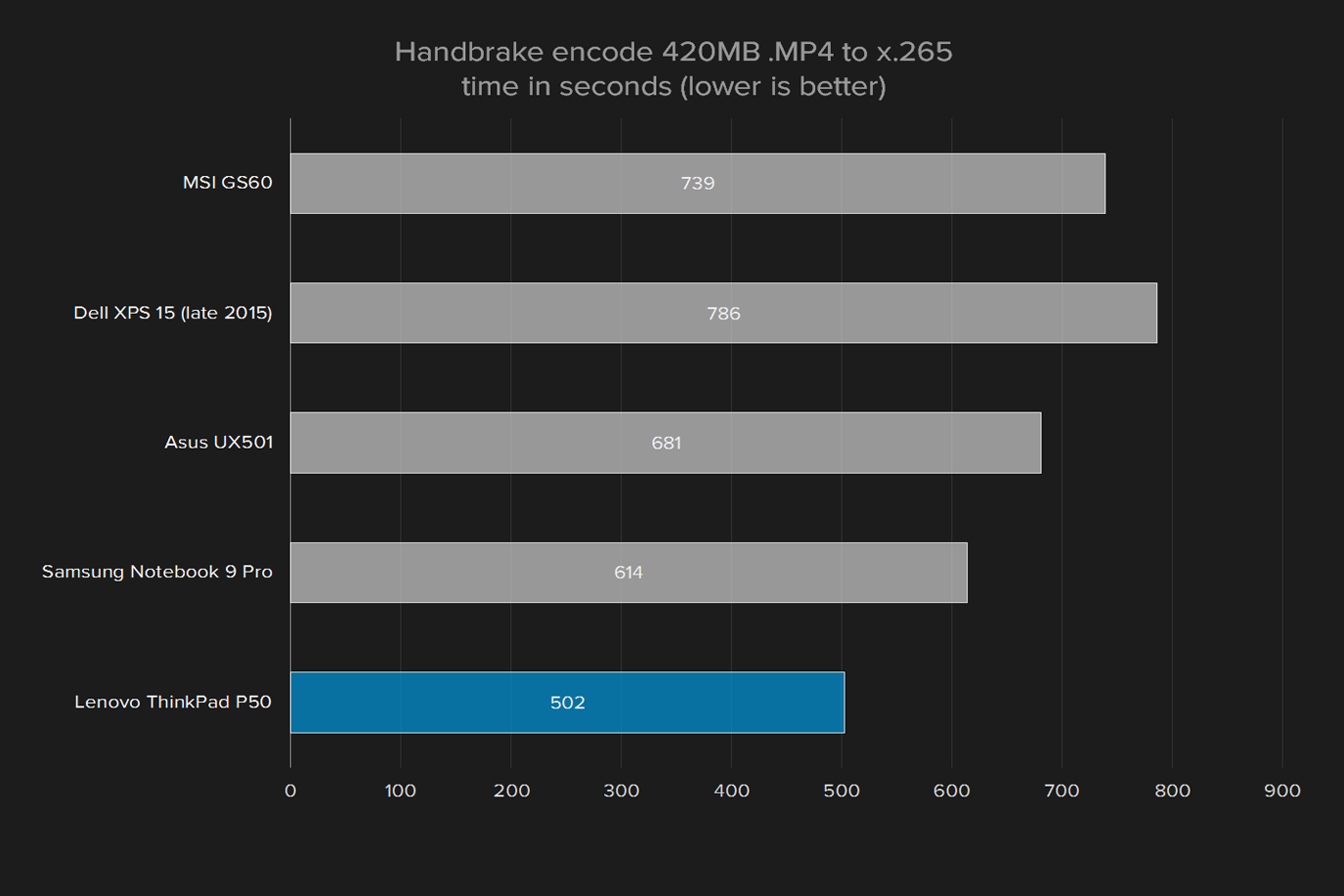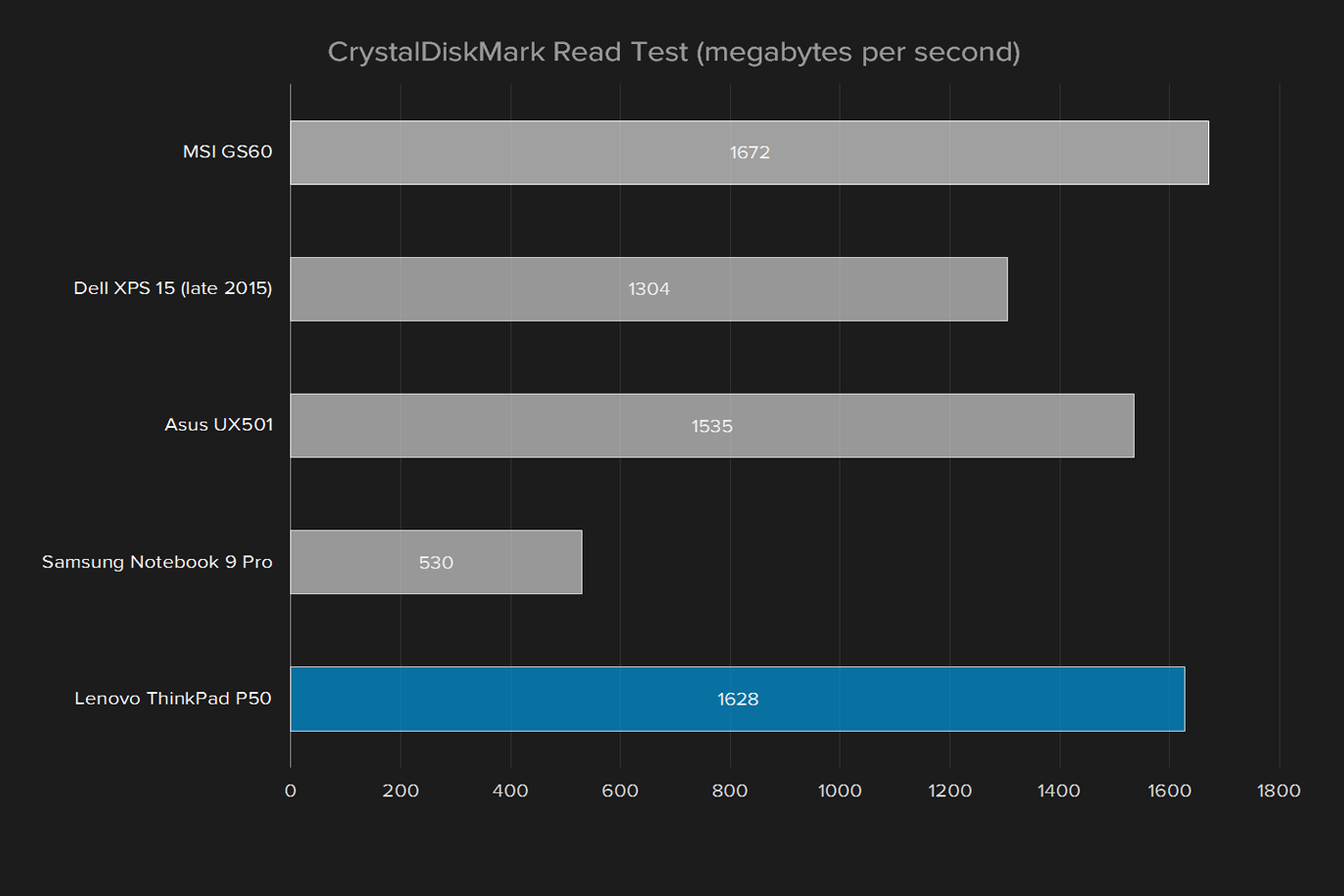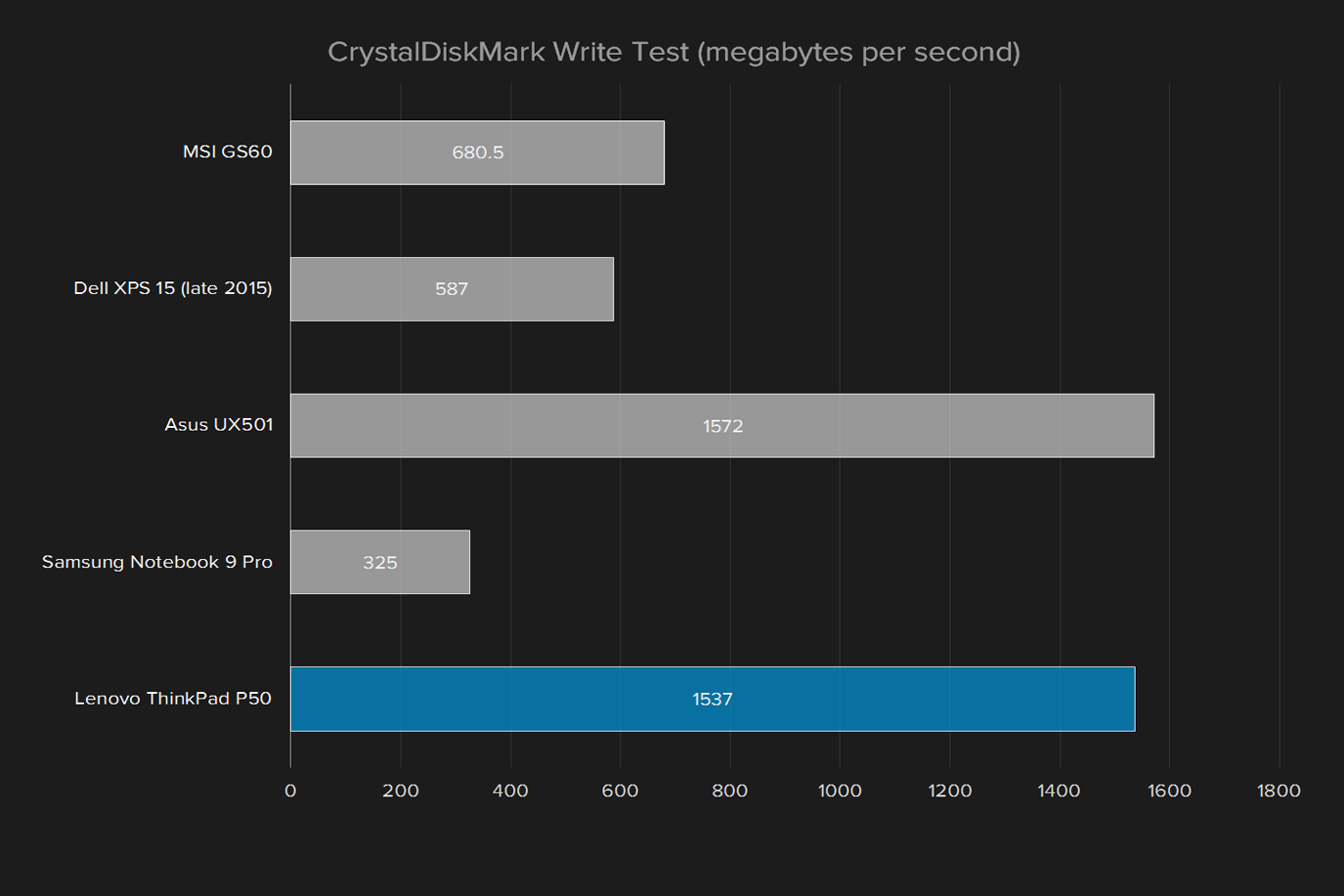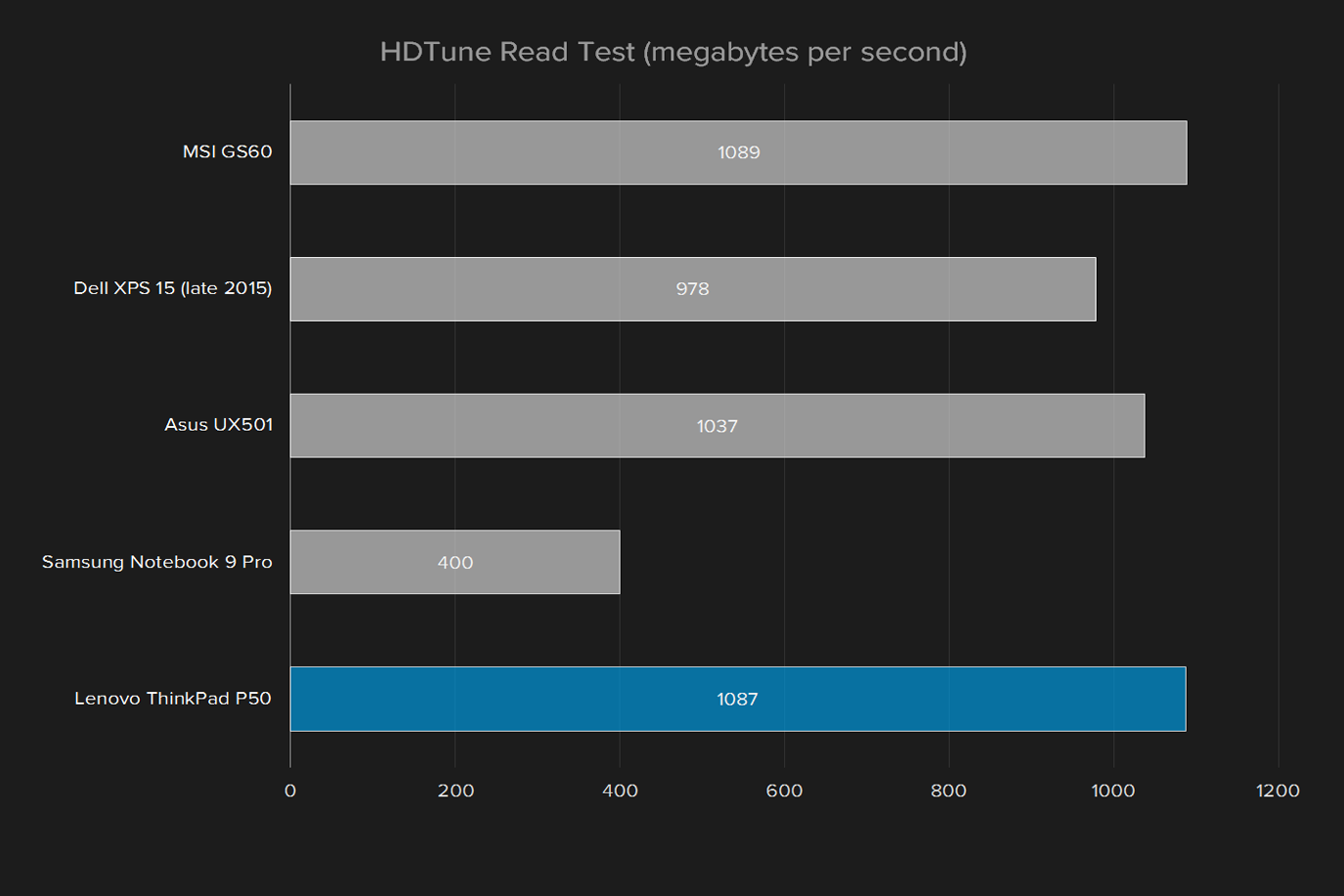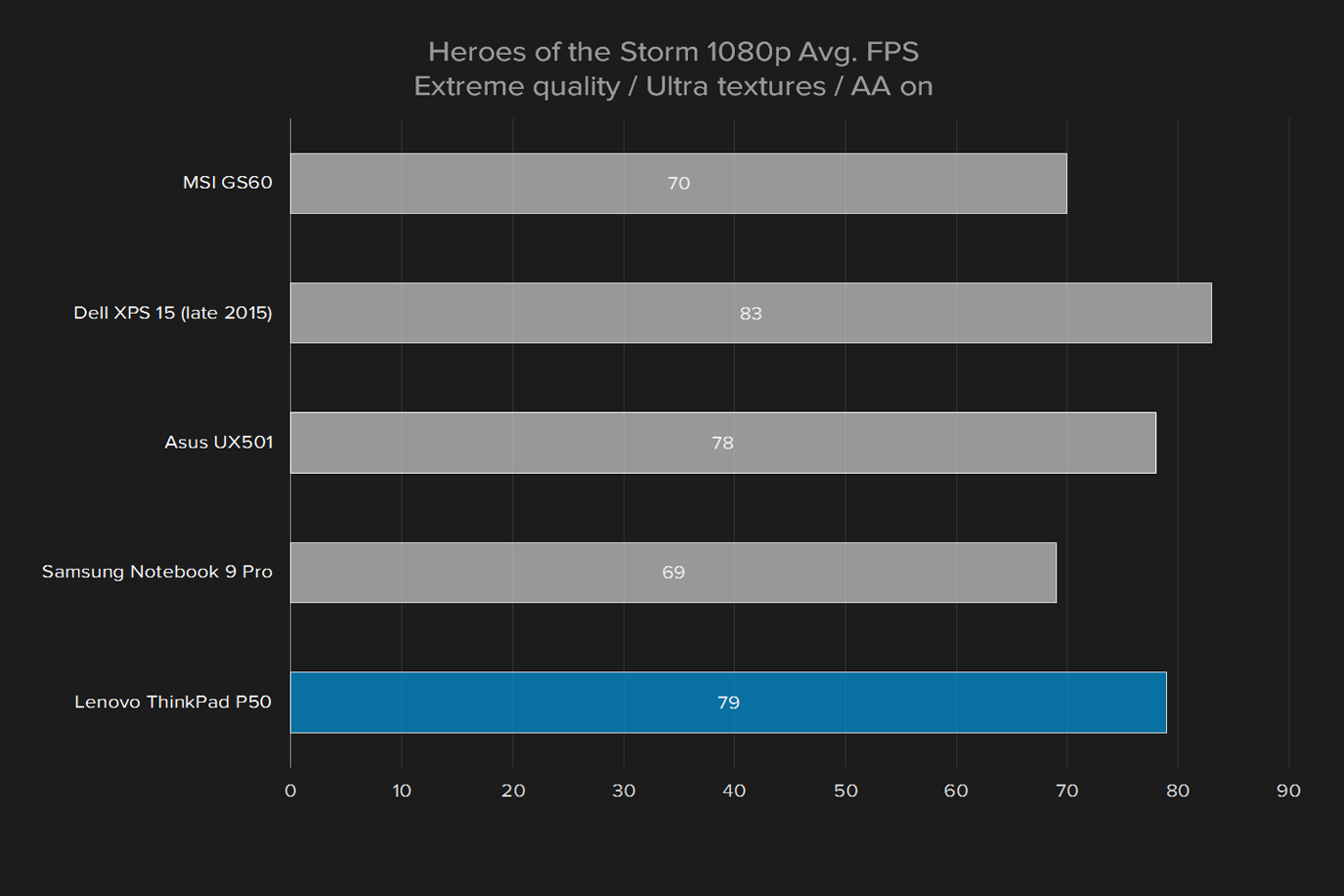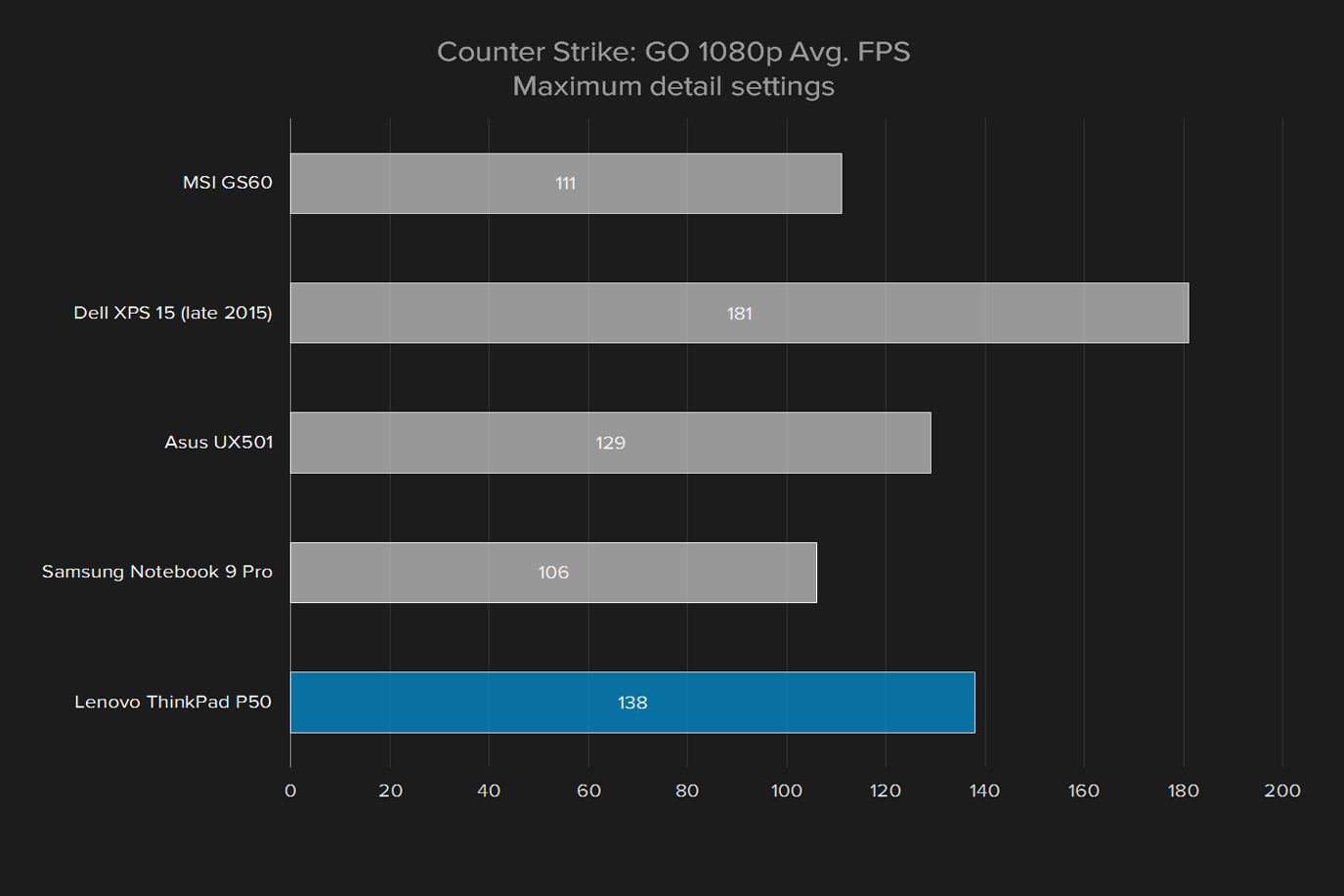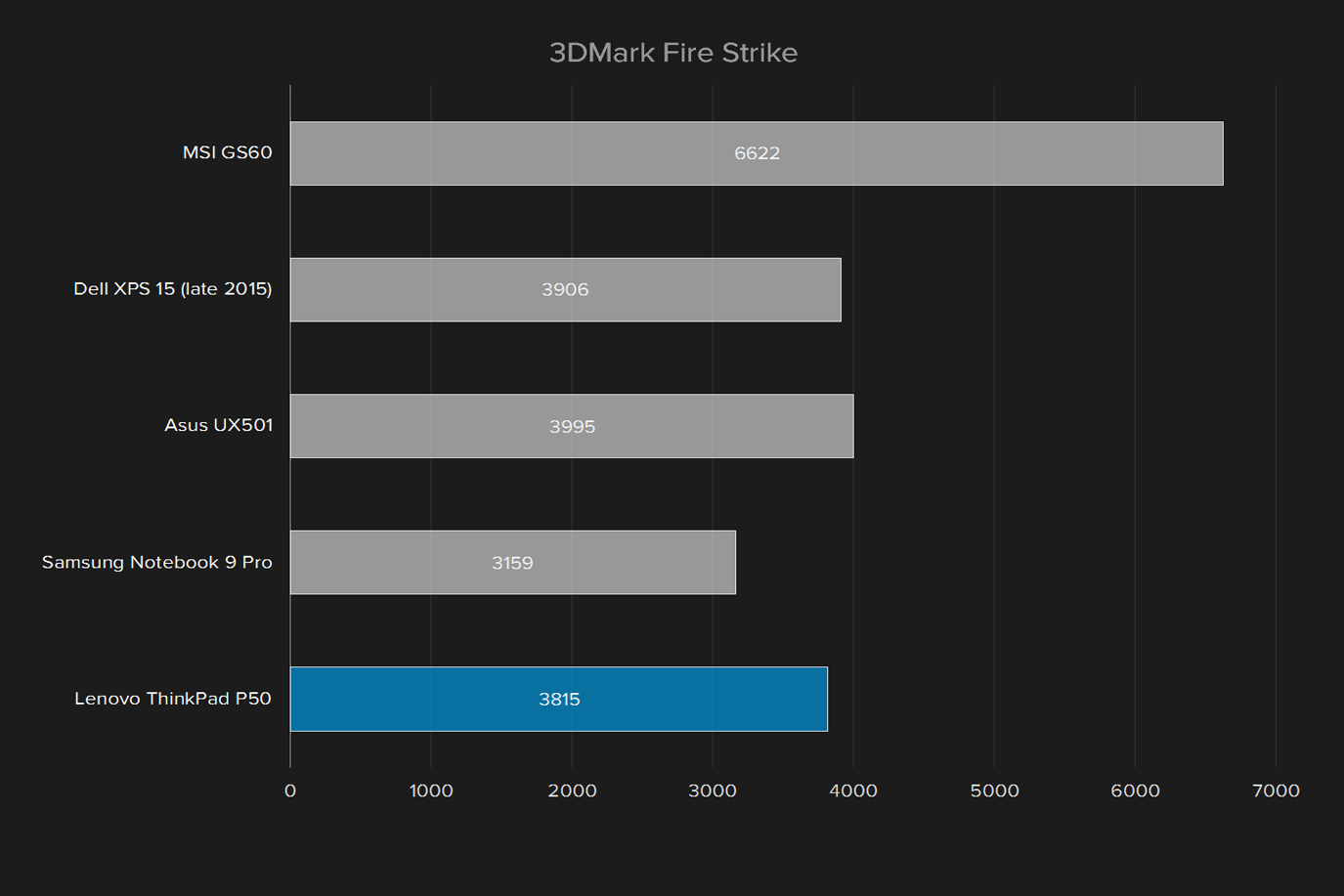- Sturdy construction
- A keyboard touch-typists will love
- Excellent 4K non-gloss display
- Fast Xeon quad-core processor
- Surprisingly good game performance
- Tepid design
- Heavy, thick chassis
- Short battery life
The “mobile workstation” is a special category of computer, one that has resisted the trends of the past five years. While mainstream laptops have focused on design, portability, and ease-of-use, workstations continue to prioritize performance and function, even at the expense of other traits.
That makes them the odd duck of modern laptops, and Lenovo’s ThinkPad P50 is a perfect example of why they’re strange. The recently re-designed system has a 15-inch display, is about an inch thick, and weighs in at 5.6 pounds. These figures make it about 40 percent heavier and thicker than Dell’s XPS 15, and almost twice the weight of Samsung’s new 15-inch Notebook 9. Compared to these alternatives, the ThinkPad P50 seems instantly outdated.
Yet the hardware is cutting edge. Our review unit came with an Intel Xeon E3-1505M quad-core processor, 16GB of RAM, and Nvidia Quadro M2000M graphics chip with 4GB of dedicated memory, and a 4K non-gloss, non-touch display. It also has some extras that not every user will appreciate, like a fingerprint sensor and a built-in color calibration camera.
Of course, these features do inflate the as-configured price to about $2,300 – a steep cost for any laptop, though routine in the market for cutting-edge mobile workstations. Let’s see if the P50 can help you achieve employee of the year, or if it’ll have you packing up your office.
Old school – really old school
For this year’s April’s Fools we jokingly reviewed an old IBM ThinkPad 770E that we found while sorting old hardware. While that system is well over a decade old, and the brand has passed from IBM to Lenovo, it’s easy to see the lineage between that ancient rig and the new ThinkPad P50. Like its ancestor, the P50 is built to last. Every panel feels rock solid and there’s absolutely zero flex in the chassis, no matter how it’s handled. Two large, metal hinges keep the screen in place, and the display itself is bordered by thick bezels that should resist bumps and scrapes. While most of the interior is made of rugged, smooth plastic, the interior has a soft-touch texture that feels premium and improves your grip while holding the device.
As stated above, this is not a small system, and it won’t win any design awards. It’s a sturdy box that holds the hardware in place. That will strike a chord with a certain kind of user. Beautiful
Lenovo puts the P50’s bulk to good use. It has four USB 3.0 ports, all of them supporting always-on charging, along with HDMI 1.4, Mini-DisplayPort 1.2, Thunderbolt 3, Ethernet, and a microphone / headphone jack. Those fairly common ports are joined by more exotic options like ExpressCard, SDXC reader, and optional Smart Card Reader. Finally, the laptop has a dock connector for an optional accessory, in case you need even more connectivity.
Now that’s a keyboard
The ThinkPad P50 starts out big thanks to its 15-inch display, and its thick bezels result in a body that’s larger overall than most other
Every panel feels rock solid, with absolutely zero flex in the chassis.
What you would notice is excellent key travel and tactile feel. The keys assist touch-typists with a slightly rounded bottom and concave design, features that better define each key when the user’s not looking at them. When pressed, the keys respond with long, linear travel that ends in a firm, but not harsh action. It’s the best keyboard we’ve used in a long time, and that includes top-notch rivals like Apple’s MacBook Pro 15 with Retina.
There is one flaw – the backlight. There are just two brightness settings, which is a bit limited, but the real problem is light leak. Lenovo’s excellent keyboard leaves a large gap between the keys and the interior of the keyboard, and light leaks from that space when the backlight is on. That means the area around the keys is often brighter than the keycaps themselves, making low-light use more difficult.
Thankfully, the Lenovo’s touchpad restarts its winning streak. It’s not large for the laptop’s size, but only because of its set of three discrete, clicky touchpad buttons, which are accompanied by a second set between the touchpad and keyboard. These work with the TrackPoint navigation stick, which works as well as expected. Not everyone likes trackpointers, but those who enjoy them will find the P50 has the best of the breed.
A matte display that competes with the best
The base ThinkPad P50 has a 1080p display, but our review unit came with an upgrade to a
And the feature definitely pays off. In our tests the P50’s average color error was .53. Lower readings are better, and those below one are difficult for the human eye to notice. This result is the second-best we’ve ever seen from a laptop, behind only the exotic Asus Zenbook NX500, which had a Quantum Dot display. It’s especially impressive given the P50’s non-gloss coat. We’ve never tested a matte screen with better color – not even a standard, full-sized monitor.
The excellent color result was backed up by a high contrast ratio of 700:1 and a color gamut that covered 100 percent of the sRGB range, along with 96 percent of AdobeRGB. Gamma came in at 2.1, off the ideal curve of 2.2 – but it was about as close to 2.2 as possible without achieving that target. These figures aren’t record breakers, but they’re excellent, and together they make for one of the
If it has any flaw, it’s the low maximum brightness of 206 lux – quite a bit less than most alternatives, which routinely exceed 300 lux. But the matte display makes up for that, since it resists glare. The Lenovo ThinkPad P50 can be used in any environment, even outdoors in full sun, though you may have to squint.
To score well in tests is only half the battle. Some
CPU performance
Normally, a high-end laptop will come with an Intel Core i7-6700HQ processor, which is more than adequate for any task. But Intel decided last year to extend its Xeon line-up, and the Intel Xeon E3-1505M quad-core is a result of that shift. Compared to the Core i7-6700HQ, it has a higher base clock speed (2.8GHz vs 2.6GHz) and a higher maximum Turbo Boost (3.7GHz vs 3.5GHz). The P50 can be had with a Core i7 quad, but our top-tier review unit equipped the Xeon.
Our tests gave the edge to the Lenovo ThinkPad P50’s Xeon over other quad-core processors. It only performed significantly better in multi-core tests, most notably 7-Zip and Handbrake video encoding, where it was up to 20 percent quicker than the next fastest system we’ve tested. A gap like that is not something you’ll notice in everyday use – though the ThinkPad P50 does feel fast no matter what’s running – but it can save you a lot of time if you frequently perform tasks that take minutes, or even hours, to complete.
Hard drive performance
Lenovo equipped our review unit with an old friend, Samsung’s 950 Pro M.2 PCI Express solid state drive. We’ve run across this drive multiple times, and have always been impressed by its performance.
Choosing the 950 Pro is really the mandatory minimum for modern 15-inch
Gaming performance
Intel’s enterprise-grade Xeon is joined by Nvidia’s similarly refined Quadro M2000M, the company’s mid-range enterprise graphics solution. While based on the same architecture as the gaming GTX line, Quadro is tweaked for work, and has drivers certified to be compatible with specific, popular enterprise apps. The M2000M has 640 CUDA cores and 4GB of GDDR5 memory, specifications that theoretically put it in the realm of the GTX 950M and GTX 960M.
Our testing bore that out. The Lenovo ThinkPad P50 consistently performed north of Samsung’s Notebook 9 Pro, which we reviewed with a GTX 950M. Yet the numbers were slightly south of the GTX 960, which we tested in the Dell XPS 15 and Asus Zenbook UX501VW. The ThinkPad also averaged well above 60 FPS in Heroes of the Storm and Counter-Strike when those games were played at maximum detail and 1080p resolution.
Overall, the ThinkPad P50’s performance is strong enough that it could be considered an entry-level gaming laptop. You can buy a system that’s as quick for a lot less if you only care about gaming, but professionals who de-stress with a favorite game will be happy to know the P50 can handle it.
Portability
At 5.6 pounds, and an inch thick, the ThinkPad P50 is definitely not the easiest system to haul around. It’s not unbearable, and a backpack designed for a 15-inch notebook should handle it without issue. But the P50’s most obvious competitors are often a pound or two lighter, and a few tenths of an inch thinner.
The notebook comes with a 90 watt-hour battery which, unlike almost everything else on the market, can is user replaceable. That’ll be a big deal for some, as it means the notebook’s lifespan is not dictated by the life of the battery. You can swap out another at any time and three years from now, when the battery’s life has become worn down from hundreds of charging cycles, you can buy a new one and snap it in at home.

And you may need to swap batteries, because the P50 doesn’t last long on a charge. We recorded only three hours and 10 minutes of endurance in our Peacekeeper web browsing, which is, admittedly, a demanding test. Still, this result is about an hour behind the Samsung Notebook 9 Pro and Dell XPS 15. Asus’ UX501VW is way more efficient, hitting almost seven hours of endurance in the same test.
It’s no shock that the ThinkPad P50 has trouble in battery tests, given its high-resolution display and extremely powerful hardware. We expect battery life would improve by an hour, or more, if the system was optioned a less powerful processor, Quadro M1000M graphics, and 1080p display. Keep that in mind if you do decide to opt for the P50. Better features do require a compromise in battery life.
Noise
Given its hardware, you might expect the P50 to output serious heat and noise. In fact, it remains in check.
At idle we measured 95.6 degrees Fahrenheit, and a maximum fan noise of 38.5 decibels. Those figures are perhaps towards the high side for a 15-inch notebook, but not out of line for a system as powerful as the P50. The Dell XPS 15 is as loud and just a couple degrees cooler.
At load, the P50 manages even better, heating to not more than 105.5 degrees and putting out only 43.9 decibels of noise. That ties the Asus UX501. Samsung’s Notebook 9 Pro is several degrees warmer at load, and the Dell XPS 15 hits an eyebrow-raising 121.4 degrees.
Warranty
The ThinkPad P50 comes with a standard one-year warranty, with longer warranties available if you want to spend more. We’d like to see a better standard warranty on a laptop this expensive, but unfortunately, very few companies bother to offer more than a single year.
Conclusion
Today’s
Obviously, it has its flaws. It’s larger and heavier than most of its competitors, yet also suffers short battery life. It’s also quite expensive. Our test unit sold for $2,350 at the time we reviewed it, and even the base model, with a Core i7-6700HQ processor and 1080p display, sells for no less than $1,430. We don’t think the P50 is overpriced, but it’s not a value leader.
But the problems are balanced by strengths. The P50 is the most powerful notebook we’ve tested to not rely on desktop-grade hardware. Its display is top-tier by every metric. The keyboard is outstanding, and TrackPoint works as well as ever. It’s a joy to use day-to-day and powerful enough to fully replace a desktop PC for most people. That’s something few
Ultimately, this is a workstation laptop. It must be powerful, and must be enjoyable to use over a ten-hour workday. The P50 achieves those with ease. The P50 should be your next laptop if you’re serious about mobile PC hardware.






